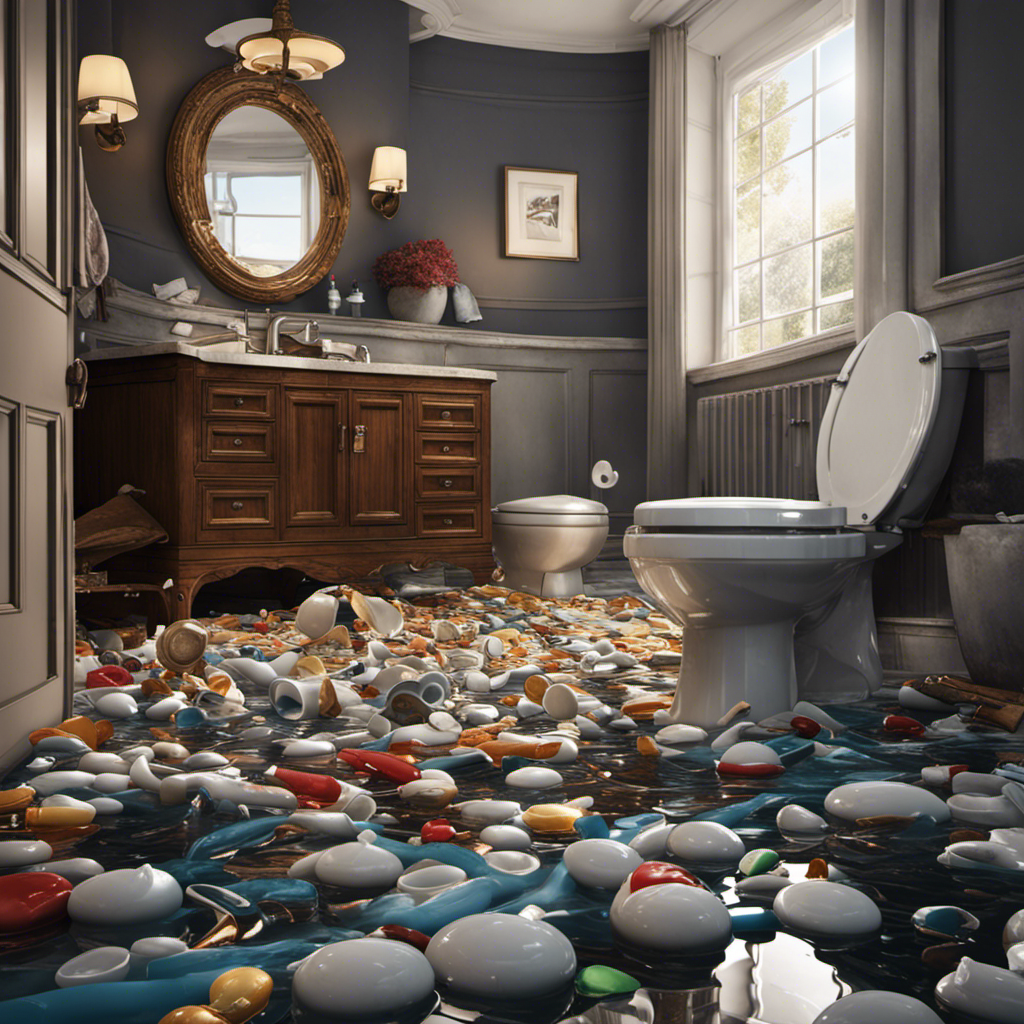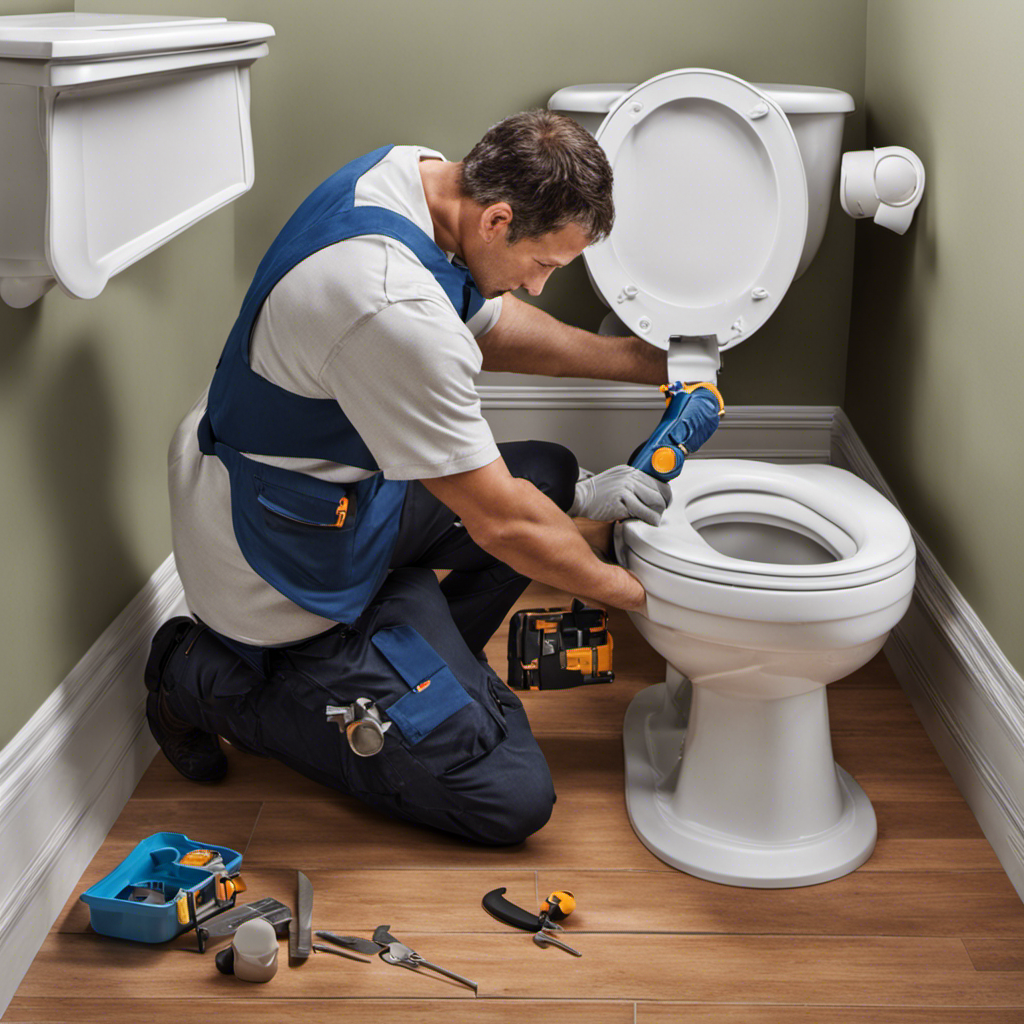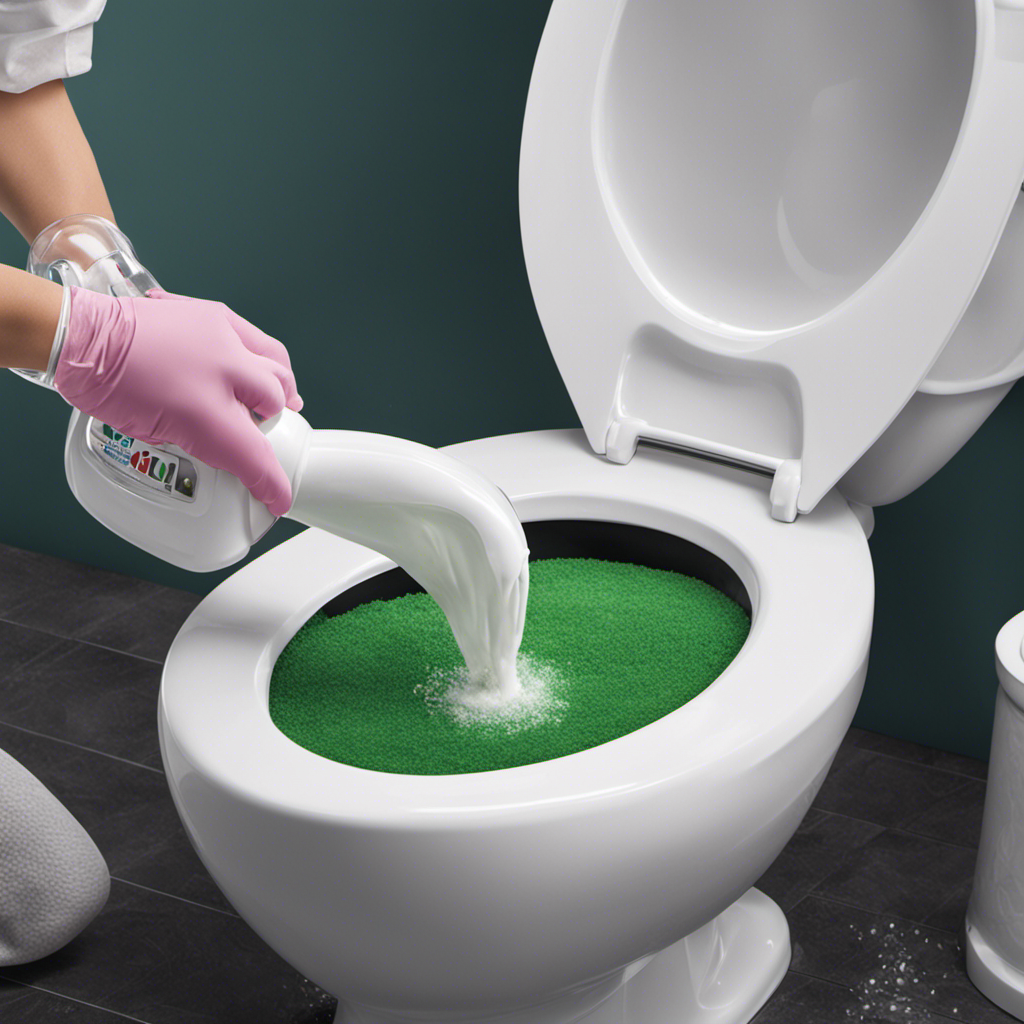As someone who understands the inner workings of plumbing systems, I cannot stress enough the importance of not flushing condoms. It may seem convenient in the moment, but the long-term consequences are far from ideal.
Imagine a delicate dance between water and waste, disrupted by a stubborn condom causing clogs and damage. Not only that, but these non-degradable culprits can make their way to the ocean, polluting the water and endangering aquatic life.
Let’s take a moment to explore the dangers of flushing condoms and learn how to protect our plumbing and the environment.
Key Takeaways
- Flushing condoms can lead to clogs in the pipes and damage to the plumbing system.
- Condoms are non-degradable and can stay in the sewer for years, causing environmental pollution and endangering aquatic animals.
- Properly disposing of condoms in the trash is a better and more eco-friendly alternative.
- If condoms have caused a blockage, using a plunger, toilet auger, dish soap, or a combination of vinegar and baking soda can help unclog the toilet.
The Environmental Impact of Flushing Condoms
Flushing condoms can harm the environment by polluting water and endangering aquatic animals. This is due to the fact that condoms are non-degradable and can stay in the sewer system for years, as they do not dissolve in water like toilet paper and human waste.
Additionally, flushing condoms can lead to clogs in the pipes, causing potential plumbing issues. To mitigate these risks, it is important to explore innovative condom disposal methods.
One such method is to wrap the used condom in toilet paper and throw it in the trash can. Another option is to place a trash can next to the toilet for easy disposal.
Potential Consequences: Clogs and Pipe Damage
I’ve learned that disposing of condoms in the toilet can lead to clogs in the pipes and potentially cause damage to the plumbing system. Flushing condoms down the toilet is not only bad for the environment, but it can also create a host of problems within your plumbing system.
Preventive measures should be taken to avoid these potential health risks and costly repairs. It is important to properly dispose of condoms in the trash can instead of flushing them. By wrapping the used condom in toilet paper and throwing it away, you can prevent clogs and protect your plumbing.
Taking these simple steps can save you from the headache and expense of dealing with clogged pipes and potential damage to your plumbing system.
Embarrassment: The Risk of Condoms Being Found
When condoms are left in the sewer system, there is a risk of someone finding them and causing embarrassment. This is why it is crucial to practice proper condom disposal etiquette to avoid awkward situations.
Flushing condoms down the toilet is not recommended as they are non-degradable and can lead to clogs in the pipes. Additionally, flushed condoms can harm the environment by polluting water and endangering aquatic animals.
Instead, wrap the used condom in toilet paper and throw it in the trash can. Placing a trash can next to the toilet for easy disposal is also a good idea.
Protecting Aquatic Life: Condoms and Water Pollution
To prevent harm to aquatic life and water pollution, it is important to properly dispose of condoms and avoid flushing them down the toilet. Flushing condoms can have severe consequences on marine life and the overall ecosystem. The non-degradable nature of condoms means that they can stay in the sewer for years, leading to clogs in the pipes and potential embarrassment if found by someone. More importantly, flushed condoms can pollute water and endanger aquatic animals. To prevent pollution, it is crucial to choose eco-friendly condom disposal methods. Wrapping the used condom in toilet paper and throwing it in the trash can is a simple and effective alternative. By avoiding flushing condoms, we can protect our environment and ensure the well-being of marine life.
| Preventing Pollution | The Impact on Marine Life |
|---|---|
| Eco-friendly condom disposal methods | Flushing condoms can lead to water pollution |
| Wrapping condoms in toilet paper and throwing them in the trash can | Endangers aquatic animals |
| Avoiding flushing condoms | Non-degradable nature of condoms contributes to pollution |
Alternative Disposal Methods for Used Condoms
A better option for disposing of used condoms is to wrap them in toilet paper and throw them in the trash can. This is one of the proper disposal methods for condoms and ensures their safe disposal without causing harm to the environment or plumbing systems.
Incineration is another option for disposal, but it should be approached with caution due to safety concerns. It is important to follow proper incineration safety guidelines to prevent accidents or the release of harmful substances into the air.
However, wrapping condoms in toilet paper and throwing them in the trash can is a more convenient and accessible method for most individuals. By choosing this method, we can effectively dispose of used condoms while maintaining the integrity of our plumbing systems and protecting the environment.
Unclogging a Toilet: Plunger Method
I can use the plunger method to unclog a toilet. When it comes to toilet plunging techniques, the plunger is a tried and true tool for removing clogs. Here are the steps to effectively use a plunger:
-
Position the plunger: Place the rubber end of the plunger directly over the drain hole in the toilet bowl.
-
Create a seal: Press the plunger firmly against the bottom of the bowl to create a vacuum seal.
-
Push and pull: Push the plunger down forcefully, then pull it back up rapidly. Repeat this motion several times to generate pressure and break up the clog.
-
Listen for the sound: Listen for a bubbling sound, which indicates that the clog is being dislodged.
-
Test the toilet: Flush the toilet several times to ensure that the clog is fully cleared.
Common toilet clog causes include excessive toilet paper usage, flushing foreign objects, and improper waste disposal. By using the plunger method correctly, you can effectively unclog your toilet and keep your plumbing system running smoothly.
Unclogging a Toilet: Toilet Auger Method
Using a toilet auger is an effective method for unclogging a toilet. When faced with a stubborn clog that cannot be cleared with a plunger, a toilet auger is a reliable tool to have on hand.
However, it is important to prioritize safety when using a toilet auger. First, make sure to wear gloves and protective eyewear to prevent any potential injuries. When inserting the auger into the toilet bowl, be cautious not to apply too much force to avoid damaging the pipe.
Rotate the rubber handle clockwise to break up the clog, but be mindful of the pipe’s integrity. Once the auger breaches the clog, carefully pull it out to avoid any splashing or mess.
Unclogging a Toilet: Dish Soap and Vinegar Solution
When unclogging a toilet, it’s important to remember that dish soap and vinegar can be an effective solution. This combination can help break down clogs and lubricate the pipes, making it easier for the clog to move through.
Using dish soap and vinegar has several benefits, including:
- Environmentally friendly: Unlike harsh chemicals, dish soap and vinegar are safe for the environment and won’t harm aquatic animals.
- Cost-effective: These items are readily available in most households, making them a budget-friendly option for unclogging a toilet.
Proper condom disposal is also crucial to prevent clogs and protect your plumbing. Flushing condoms down the toilet can lead to clogs and damage to the sewer system. It’s important to wrap used condoms in toilet paper and dispose of them in the trash can.
Frequently Asked Questions
Can Flushing Condoms Down the Toilet Cause Damage to the Plumbing System?
Flushing condoms down the toilet can cause serious damage to the plumbing system. The non-degradable nature of condoms can lead to clogs in the pipes and potential harm to sewage treatment plants. It’s important to dispose of condoms properly in the trash.
What Are the Potential Consequences of Flushing Condoms, Besides Clogs and Pipe Damage?
Flushing condoms can have serious consequences, beyond causing toilet clogs and pipe damage. It can lead to embarrassment if found, harm the environment, and pollute water, endangering aquatic animals. Proper disposal is crucial.
Are There Any Environmental Risks Associated With Flushing Condoms?
Flushing condoms poses potential health risks and impacts wastewater treatment plants. They don’t degrade, causing clogs and embarrassing encounters. Proper disposal in the trash prevents pollution. Take precautions to avoid damaging your plumbing system.
How Can Flushed Condoms Harm Aquatic Life and Contribute to Water Pollution?
Flushing condoms can harm aquatic life and contribute to water pollution. Condoms don’t dissolve like toilet paper and can clog pipes, leading to sewage overflow. Proper condom disposal methods, like wrapping them in tissue and throwing them in the trash, are crucial to prevent these issues.
What Are Some Alternative Methods for Disposing of Used Condoms Besides Flushing Them?
Proper disposal of used condoms is important. Besides flushing, there are alternative methods. Wrapping in toilet paper and throwing in the trash can is a common option. Recycling programs for condoms also exist, promoting eco-friendly practices.
Conclusion
In conclusion, it’s imperative to remember that flushing condoms down the toilet is a slippery slope that can lead to disastrous consequences.
These non-degradable barriers can wreak havoc on our plumbing system, creating clogs and potentially damaging pipes.
Moreover, the environmental impact cannot be ignored, as flushed condoms can find their way into our precious ocean, posing a threat to aquatic life.
By properly disposing of condoms in the trash, we can prevent these issues and protect our plumbing and the environment.
Let’s keep our toilets flowing smoothly and our marine friends safe from harm.










